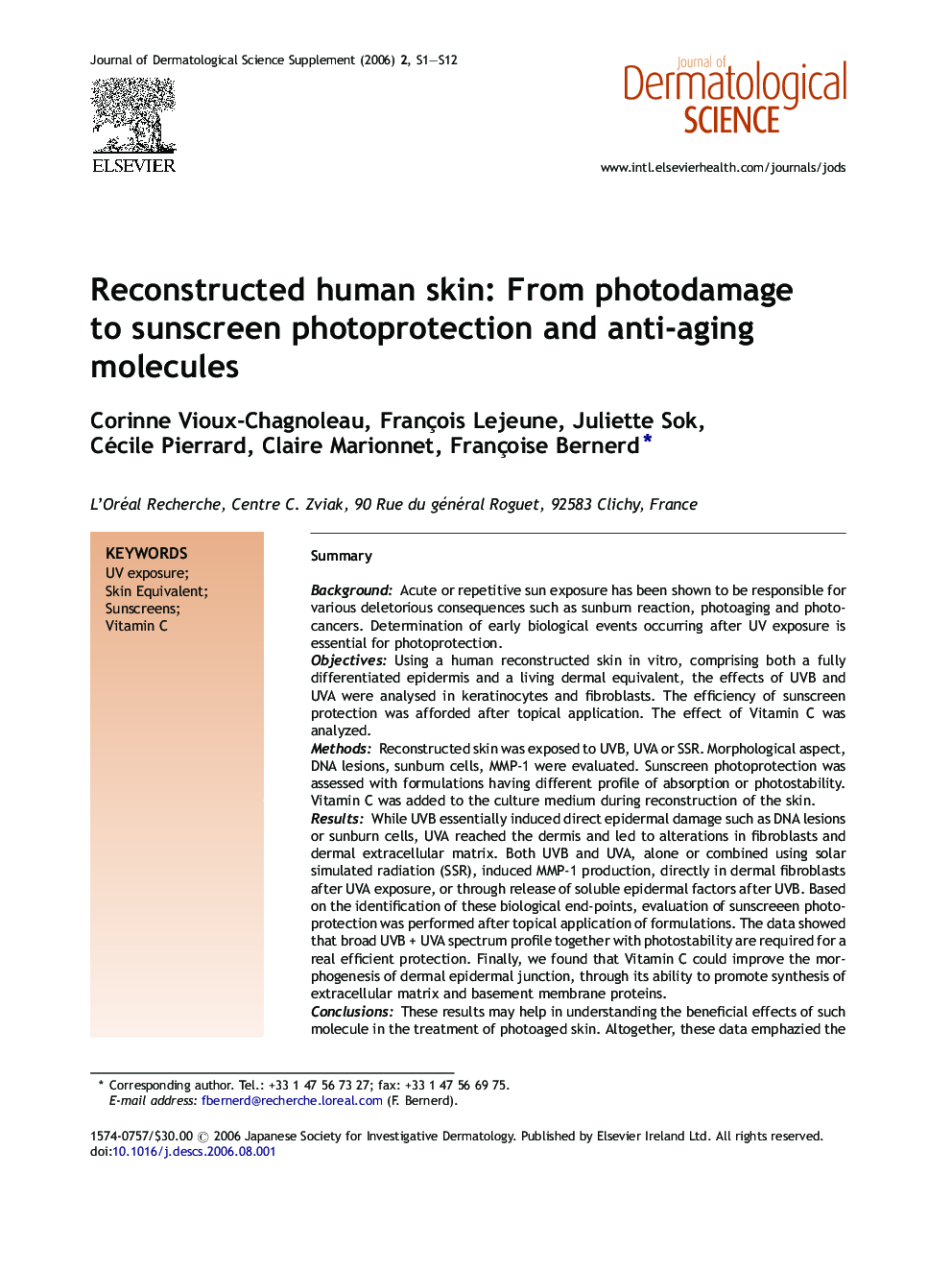| Article ID | Journal | Published Year | Pages | File Type |
|---|---|---|---|---|
| 3214649 | Journal of Dermatological Science Supplement | 2006 | 12 Pages |
SummaryBackgroundAcute or repetitive sun exposure has been shown to be responsible for various deletorious consequences such as sunburn reaction, photoaging and photocancers. Determination of early biological events occurring after UV exposure is essential for photoprotection.ObjectivesUsing a human reconstructed skin in vitro, comprising both a fully differentiated epidermis and a living dermal equivalent, the effects of UVB and UVA were analysed in keratinocytes and fibroblasts. The efficiency of sunscreen protection was afforded after topical application. The effect of Vitamin C was analyzed.MethodsReconstructed skin was exposed to UVB, UVA or SSR. Morphological aspect, DNA lesions, sunburn cells, MMP-1 were evaluated. Sunscreen photoprotection was assessed with formulations having different profile of absorption or photostability. Vitamin C was added to the culture medium during reconstruction of the skin.ResultsWhile UVB essentially induced direct epidermal damage such as DNA lesions or sunburn cells, UVA reached the dermis and led to alterations in fibroblasts and dermal extracellular matrix. Both UVB and UVA, alone or combined using solar simulated radiation (SSR), induced MMP-1 production, directly in dermal fibroblasts after UVA exposure, or through release of soluble epidermal factors after UVB. Based on the identification of these biological end-points, evaluation of sunscreeen photoprotection was performed after topical application of formulations. The data showed that broad UVB + UVA spectrum profile together with photostability are required for a real efficient protection. Finally, we found that Vitamin C could improve the morphogenesis of dermal epidermal junction, through its ability to promote synthesis of extracellular matrix and basement membrane proteins.ConclusionsThese results may help in understanding the beneficial effects of such molecule in the treatment of photoaged skin. Altogether, these data emphazied the fact that human skin reconstructed in vitro is a valuable tool for research studies as well as for evaluation of compounds designed to prevent or correct photodamage.
